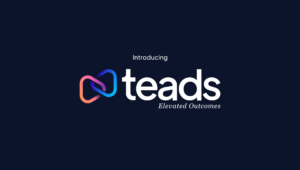AudienceScience Connect Aiming To Bring Efficiency To The Premium Sales Layer
by Ciaran O'Kane on 21st Feb 2011 in News


How time consuming is it to send an I/O by fax? And why the hell am I spending a whole week smashing the phones to close a paltry five grand deal? Work flow is still a major pain in the neck for both publisher and agency. Despite all the innovation on the non-guaranteed side, premium sales still lacks real efficiency. And what about pricing? How can a publisher build in their agency trading agreements into premium inventory prices? And what about targeting? There's clearly still quite a lot to do for the premium layer. AudienceScience is one of many ad tech vendors looking to address these problems. ExchangeWire recently spoke to Stuart Colman about the new Connect platform to get some insight into how it's enabling publishers to manage and sell their premium inventory - and what all this means for media buyers.
Can you provide some overview on the AudienceScience Connect platform? What are the benefits for publishers putting their inventory through connect?
SC: AudienceScience Connect is a Media Trading Platform. It brings premium publishers and advertisers together, allowing them to define and negotiate directly with each other and choose who they want to work with. The platform enables guaranteed future media to be purchased, by using inventory forecasting, and delivers transparent pricing, allowing the publisher and advertiser to agree on inventory prices, positions and formats upfront. Although there are a wealth of trading platforms available today, they are very much focused around remnant auction-based models, which are very different to Connect.
The benefits of the technology are not limited purely to publishers but extend to advertisers as well. While I’ve often heard the argument that “you cannot serve two masters” I don’t believe this is necessarily true. This definitely applies to situations where a solution benefits one party above the other. However, we have overcome this through the transparent nature of the Connect platform in the key areas of price, partners and positions purchased. This means both parties can genuinely benefit from the technology equally. For publishers the key benefits are around automation and control; automation of the workflow process and operating on a single platform bringing efficiencies; control by determining price, who they will work with and what they will accept on their sites. Advertisers also benefit from a streamlined process that helps them minimise the time taken to get a campaign live. They have transparent and immediate access to premium inventory; they can define precisely their audience across a wealth of criteria, including their own proprietary data sources, and the ability to apply true frequency caps by running their campaigns across multiple publishers via Connect.
How does Connect improve workflow for publishers and advertisers in terms of IOs?
SC: The aim is to simplify the whole workflow process. It brings together all the key elements needed to execute media buying and selling – automated negotiations and work flows, inventory management, audience targeting, campaign management and reporting - in one place. ‘Efficiency’, ‘effectiveness’ and ‘ease of use’ are what we believe we are delivering. Everyone knows the mantra ‘complexity kills’ and the danger for our industry is that we will frighten off the more brand-focused businesses by making the whole online advertising process seemingly impenetrable. They want to do more with online but struggle to embrace it due to difficulties in navigating everything that is involved in taking advantage of it. The more we all can do to simplify and add transparency to the process, the easier it becomes for such companies to take advantage of what online can deliver.
You are allowing publishers to build their trading agreement prices into the pricing on that platform. Can you give some insight on how this will increase efficiencies for the publisher in negotiating price with advertisers?
SC: It’s not simply about efficiencies but also transparency, control and trust. Publishers can bring their current negotiated contracts with advertisers or agencies on to the platform (what we term Framework Agreements). As such contracts cover agreed rates and highlight the business is a trusted partner of the publisher, campaigns can be set up, targeting specified, inventory identified and secured and then set live in a very short space of time.
If an advertiser or agency does not have a contract with a publisher on Connect, they can still work with them on a campaign by campaign basis. Publishers on the platform can make public what they are willing to sell specific inventory for. Advertisers can then carry out online negotiations to agree pricing and volumes and then set up a campaign accordingly.
Will publishers be able to layer their Connect inventory with Audience Science data segments? How will this work?
SC: They can, as the Connect platform is driven by our philosophy of audiences. Connect allows publishers to bring the target audience segments they have created in our data management platform, the AudienceScience Gateway, so that advertisers can then use them to drive their targeting.
Do you have controls over the type of advertisers/agencies a publisher trades with?
There certainly are. The first and most obvious is that the publisher decides who they want to work with. Secondly, even though they may have agreements with agencies, publishers can still block specific advertisers or industry sectors that they will not accept on their sites. Finally, they are also able to decline creatives if they feel they are not appropriate for their audiences.
Is it just premium inventory that publishers are selling on the platform? Are there plans to help manage yield across non-guaranteed real-time?
SC: The trading of guaranteed inventory very much sets the platform apart from others in the market. However, our objective is to simplify online display advertising and offer a single platform solution that companies are increasingly demanding. As Connect is a media trading platform, there are plans to develop it to encompass a wider range of media in the future.
Connect is effectively an ad server. Is Audience Science looking to close the loop between its data business and this new premium ad serving solution?
SC: Connect cannot be seen as just an adserver. Although the platform incorporates ad serving, it is a combination of a data, forecasting and a targeting engine, adserving and a marketplace.
Can you explain how advertisers can use the “frequency goal” feature to buy publisher impressions and improve campaign performance?
Setting a frequency goal allows a campaign to optimise to a minimum number of times a user is reached during a campaign. For example, by setting it at 5, the campaign will optimise towards reaching users who will have at least 5 interactions with the campaign. As Connect is a unified cross-publisher targeting platform, setting the frequency goal will ensure this occurs across all the publishers the campaign is running on. The other option available is also to set a maximum volume of interactions via a frequency cap.
Why would an agency or an advertiser use Connect when they can run campaigns through DFA or Atlas, MediaMind et al?
SC: There are a host of reasons for this. For example, in comparison to most adservers, Connect delivers cross-publisher targeting and frequency capping. If an agency hosted their creatives on their own adserver and sent the creative tags to the publishers, every publisher would do their own targeting and frequency capping. The result would make frequency capping irrelevant as it would apply to each publisher rather than across the campaign as a whole. Connect would ensure the frequency capping is applied at campaign level.
SC: Connect also offers a forecasting engine that tells the advertiser, how much inventory is available per target on all publishers which is not possible operating outside Connect.
How does Connect differentiate itself from these other buy-side ad server options?
SC: Ultimately, Connect links both buyers and sellers, bringing benefits for both parties rather than being a single point solution for one group. As mentioned earlier, many of the current solutions are focusing on the trading of remnant via auction based platforms. Connect, however, is helping the automation of guaranteed future buys in a transparent manner which differentiates it from the other platforms.
How can AudienceScience Connect work with AudienceScience Gateway? Will you be able to layer third party data, like BlueKai and Quantcast segments, on Connect publisher inventory?
SC: In the same way a publisher can bring its audience segments that have been created in the Gateway, advertisers can also do the same. By sharing their audience segment definition built in the Gateway with Connect they can carry out their targeting across the platform. At any time, if they change the segment definition in their own warehouse, for example by adding third party data, this will be reflected in the delivery via Connect.
Ad ServerDisplayDSPExchangeTargeting








Follow ExchangeWire